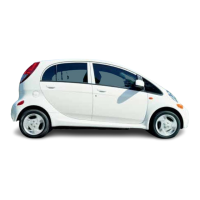5-2 Chapter 5 Engine electrical systems
ignition coil (continued)
1987models . . . . . . . . . . . . . . . . . . . . . . . . . . . . . . . . . . . . . . . .
22.5 K-ohms
1988 and
1989 models
Pick-up . . . . . . . . . . . . . . . . . . . .._.._...._...._._....
27.0 K-ohms
Montero . . . . . . . . . . . . . . . . . . . . . . . . . . . . . . . . . . . . . . . . . 14.5 to 19.5 K-ohms
1990 and later models
Pick-up . . . . . . . . . . . . . . . . . . . . . . . . . . . . . . . . . . . . . . . . . . 10.3 to 13.9 K-ohms
Montero . . . . . . . . . . . . . . . . . . . . . . . . . . . . . . . . . . . . . . . . . . 14.5 to 19.5 K-ohms
Ballast resistor resistance
1983through1985models . . . . . . . ..i..._......._........ 1.2 to 1.5 ohms
1986 and later models . . . . . . . . . . . . _ _ . . . . . . . . . . . . . . . 1.35 ohms
Pick-up coil resistance
Note: The pick-up coil resistance check is not applicable to 1990 and later models.
1983models . . . . . . . . . . . . . . . . . . . . . . . . . . . ..j........... 920 to 1,120 ohms
1984 through 1989 Mitsubishi type . . . . . _ . . . . . . . . . . . . . . . . 920 to 1,120 ohms
1986 through 1989 Nippondenso type . . . . . . . . . . . . . . _ . . . . . . .
140 to 180 ohms
1 General information
Theengineelectrical systems include all ignition, charging and starting
components. Because of their engine-related functions, these compo-
nents are discussed separately from chassis electrical devices such as
the lights, the instruments, etc (which are included in Chapter 12).
Always observe the following precautions when working on the electri-
cal systems:
a) Be extremely careful when servicing engine electrical compo-
nents. They are easily damaged if checked, connected or handled
improperly.
b) Never leave the ignition switch on for long periods of time with the
engine off.
c) Don’t disconnect the battery cables while the engine is running.
d) Maintain correct polarity when connecting a battery cable from
another vehicle during jump starting.
e) Always disconnect the negative cable first and hook it up last or the
battery may be shorted by the tool being used to loosen the cable
clamps.
It’s also a good idea to review the safety-related information regarding
the engine electrical systems located in the Safety first section near the
front of this manual before beginning any operation included in this Chap-
ter.
2 Battery -emergency jump starting
Refer to the Booster baffery &mp) starting procedure at the front of
this manual.
3 Battery - removal and installation
Refer to illustration 3.1
1 Caution: Always disconnect the negative cable first and hook if up
last or the battery may be shorted by the fool being used to loosen the
cable clamps. Disconnect both cables from the battery terminals (see il-
lustration).
2 Remove the battery hold-down clamp.
3 Lift out the
battery.
Be careful - it’s heavy.
4 While the battery is out, inspect the carrier (tray) for corrosion (see
Chapter 1).
5 If you are replacing the battery, make sure that you get one that’s iden-
tical, with the same dimensions, amperage rating, cold cranking rating,
etc.
6 Installation is the reverse pf removal.
3.1 To remove the battery
1 Detach the cable from the negative terminal
2 Detach the cable for the positive terminal
3 Remove the nuts and detach the hold-down clamp
4
Battery cables-check and replacement
1 Periodically inspect the entire length of each battery
cable
for dam-
age, cracked or burned insulation and corrosion. Poor battery cable con-.
nections can cause starting problems and decreased engine perform-
ance.
2 Check the cable-to-terminal connections at the ends of the cables for
cracks, loose wire strands and corrosion. The presence of white, fluffy de--~
posits under the insulation at the cable terminal connection IS a srgn that
the cable is corroded and should be replaced. Check the terminals fordis-
tortion, missing mounting bolts and corrosion.
3 When removing the cables, always disconnect the negative cable
first and hook it up last or the battery may be shorted by the tool used to
loosen the cable clamps. Even if only the positive cable is being replaced,
be sure to disconnect the negativecable from the battery first [see Chap-
ter 1 for further information regarding battery cable removal).
4 Disconnectthe old cables from the battery, then trace each of them to
their opposite ends and detach them from the starter sojenord and ground
terminals. Note the routing of eaci cable to ensure correct installation.
5 If you are replacing either one or both of the cables, take them with
you when buying new cables. It is vitally important that you replace the

